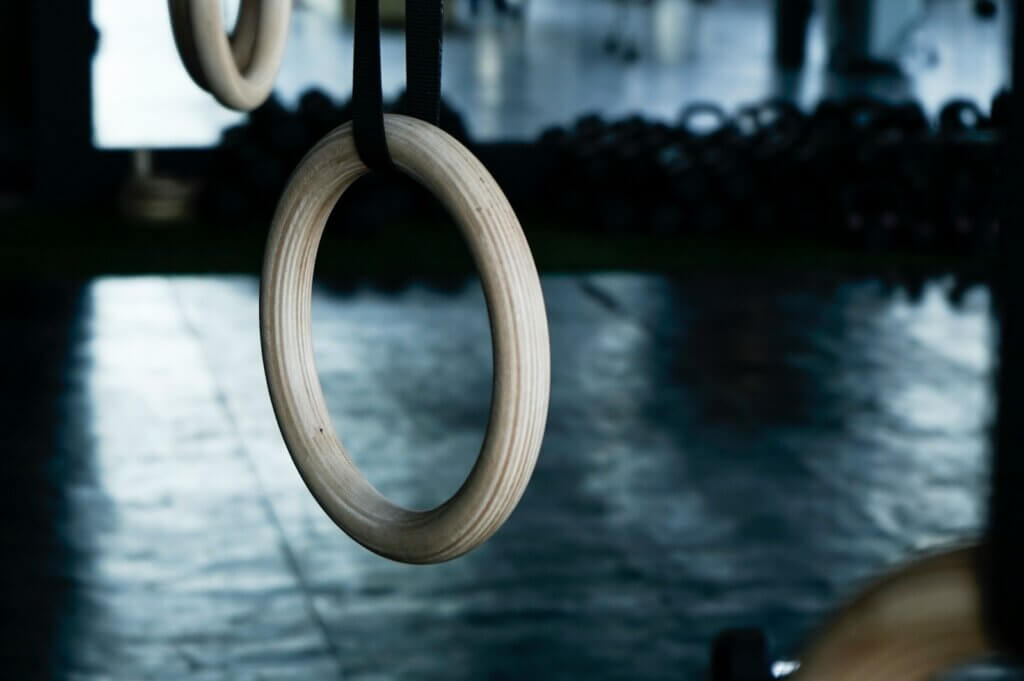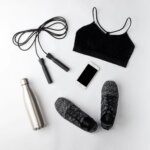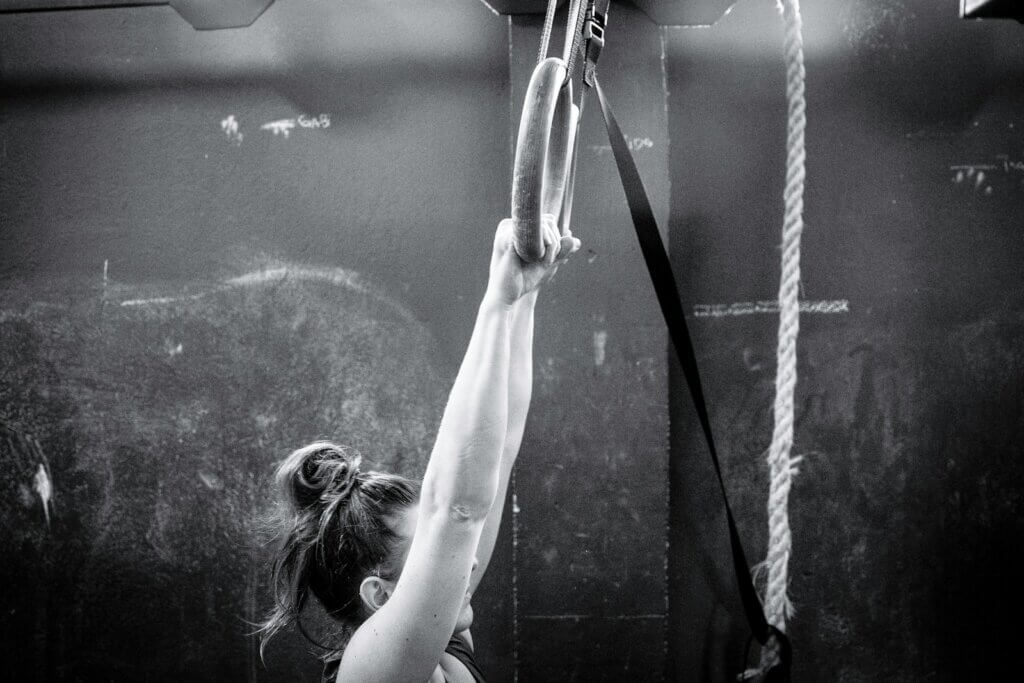How to do Ring Rows

Introduction:
Ring rows are a versatile and effective exercise that targets the muscles of the upper back, shoulders, and arms while also engaging the core. Whether you’re new to CrossFit or looking to add variety to your gym routine, mastering the ring row is essential for building strength, improving posture, and enhancing overall upper body fitness. In this guide, we’ll break down the fundamentals of ring rows, providing step-by-step instructions, essential equipment, scaling options, common mistakes to avoid, and the benefits of incorporating ring rows into your fitness regimen.
Steps in the Ring Row movement
- Setup: Adjust the height of the rings so that they are just above waist height when you are lying on the ground. Grab the rings with an overhand grip, palms facing inward, and extend your arms fully.
- Body Position: Position yourself underneath the rings with your body in a straight line from head to heels. Keep your feet planted firmly on the ground, hip-width apart, and engage your core to maintain stability.
- Pull: Initiate the movement by retracting your shoulder blades and pulling your chest towards the rings. Keep your elbows close to your body and pull until your chest touches the rings or your hands come to the sides of your chest.
- Lower: Slowly lower yourself back down to the starting position, maintaining control throughout the movement. Keep your body in a straight line and avoid arching or sagging in the lower back.
What Equipment is needed for Ring Rows
- Rings
- TRX straps
- Chalk for better grip.
Choosing the Right Gymnastic Rings
Selecting the appropriate gymnastic rings is vital for optimizing your performance and ensuring safety during ring row exercises. When choosing rings, consider factors such as material, diameter, and strap quality. Wooden rings are often preferred for their superior grip and feel, especially when hands become sweaty, compared to plastic or metal alternatives. The standard ring diameter ranges between 1.1 inches (28mm) and 1.25 inches (32mm); selecting a size that fits comfortably in your hands will enhance your grip and control during exercises. Equally important are the straps and buckles; opt for durable, high-quality straps with secure, easy-to-adjust buckles to allow for quick modifications in ring height and ensure stability during use. Investing in a reputable brand known for quality and safety standards can provide peace of mind and longevity of equipment. By carefully selecting the right gymnastic rings, you can enhance your workout experience and achieve better results in your fitness journey.
Check out the Equipment subsite for more tools, tips, and inspiration.

Shop Fitness gear now on Amazon
See Amazons extensive range of workout gear here. (Affiliate Link)
Scaling Options:
To gradually build strength and proficiency, consider the following scaling options:
- Adjust height: Lower the rings closer to the ground to decrease the difficulty of the exercise, making it easier to perform.
- Foot assistance: Place a box or bench underneath the rings and rest your heels on the elevated surface to provide assistance and reduce the amount of bodyweight you are pulling.
Progressions and Variations of Ring Rows
Incorporating progressions and variations into your ring row routine can prevent plateaus and promote continuous improvement. To increase difficulty, consider elevating your feet on a stable surface, which shifts more body weight into the movement, intensifying the challenge. Alternatively, performing ring rows with a single arm can significantly enhance unilateral strength and address potential muscle imbalances. For those seeking to target different muscle groups, adjusting the angle of your body relative to the ground can modify the emphasis on specific areas. Additionally, experimenting with different grip positions, such as a supinated (underhand) or neutral grip, can engage various muscles uniquely. Incorporating tempo variations, like pausing at the top of the movement or slowing down the eccentric (lowering) phase, can further increase time under tension and promote muscle growth. By integrating these progressions and variations, you can tailor the ring row exercise to align with your evolving fitness goals and maintain a stimulating workout regimen.
Common Mistakes to Avoid:
- Arching the back: Maintain a neutral spine throughout the movement, avoiding excessive arching or sagging in the lower back.
- Incomplete range of motion: Pull your chest all the way to the rings or your hands to the sides of your chest to ensure full engagement of the muscles.
- Using momentum: Focus on controlled, deliberate movements, avoiding swinging or using momentum to complete the exercise.
Safety Considerations and Injury Prevention
Prioritizing safety during ring row exercises is crucial to prevent injuries and ensure long-term progress. Begin by inspecting your equipment; ensure that the rings and straps are in good condition and securely anchored to a stable structure capable of supporting your body weight. Before commencing your workout, engage in a thorough warm-up that includes dynamic stretches and mobility exercises, particularly focusing on the shoulders, back, and arms, to prepare the muscles and joints for the demands of the exercise. During the movement, maintain proper form by keeping your body in a straight line, engaging your core, and avoiding excessive swinging or jerky motions. It’s essential to progress gradually, especially if you’re new to ring rows; start with a less challenging angle and slowly increase the difficulty as your strength and proficiency improve. Listening to your body is paramount—if you experience pain or discomfort, cease the exercise and consult with a fitness professional or healthcare provider to address potential issues before they escalate. By adhering to these safety considerations, you can minimize the risk of injury and enjoy the benefits of ring rows as a safe and effective exercise.
Benefits of the Movement:
- Builds upper body strength: Targets muscles in the back, shoulders, and arms, helping to develop overall upper body strength and muscular endurance.
- Improves posture: Strengthens the muscles of the upper back and shoulders, promoting proper posture and reducing the risk of injury.
- Engages the core: Requires stabilization of the core throughout the movement, helping to improve core strength and stability.

Which Muscles Are Worked:
During this exercise, the following muscle groups are engaged:
- Primary Muscles: Rhomboids, latissimus dorsi, biceps, rear deltoids
- Secondary Muscles: Forearms, core
Alternative Similar Movements:
If you’re seeking variation or targeting specific muscle groups, consider incorporating these alternative exercises:
- Pull ups
- TRX rows
- Barbell rows

Shop Fitness gear now on Amazon
See Amazons extensive range of workout gear here. (Affiliate Link)
Integrating Ring Rows into Your Workout Routine
Ring rows are a versatile addition to any strength training program, suitable for both beginners and advanced athletes. For novices, ring rows can serve as an accessible entry point to upper body pulling exercises, building foundational strength before progressing to more demanding movements like pull-ups. Advanced practitioners can utilize ring rows as a supplementary exercise to enhance muscle endurance and refine technique. Incorporating ring rows into a circuit training routine can elevate heart rate and contribute to cardiovascular conditioning while simultaneously building strength. Pairing ring rows with pushing exercises, such as push-ups or dips, can create a balanced upper body workout, promoting muscular symmetry and reducing the risk of injury. By thoughtfully integrating ring rows into your fitness regimen, you can enhance overall performance and work towards a well-rounded physique.
Q&A for Ring Row exercise
How to do ring rows without rings?
If rings are unavailable, you can perform similar movements using TRX straps. Adjust the straps to an appropriate height and follow the same technique as with rings.
How to do ring rows correctly?
Perform ring rows correctly by maintaining a straight body position, pulling with your elbows close to your body, and achieving full range of motion by bringing your chest towards the rings.
Are ring rows effective?
Yes, ring rows are effective for building upper body strength and improving muscular endurance, especially in the back, shoulders, and arms.
What muscles do the ring row work?
Ring rows primarily work the rhomboids, latissimus dorsi, biceps, and rear deltoids, with secondary engagement of the forearms and core.
Will ring rows help pull-ups?
Yes, mastering ring rows can contribute to building the necessary strength and technique required for pull-ups, making them a beneficial exercise progression.
What is the best grip for ring rows?
Use an overhand grip with palms facing inward when performing ring rows. This grip helps engage the muscles of the upper back and shoulders effectively.
Are rings better than pull-ups?
Rings and pull-ups are different exercises targeting similar muscle groups. Both are effective; however, rings offer greater instability, requiring more stabilization and engaging additional muscle fibers.
Why are pull-ups harder than rows?
Pull-ups require lifting your entire body weight against gravity, making them more challenging than rows, where your body is positioned horizontally and less weight is lifted.
Can I do rows instead of pull-ups?
Rows are a good alternative if you cannot perform pull-ups yet. They help build foundational strength and prepare you for progressing to pull-ups.
Is it OK to do only pull-ups?
While pull-ups are an excellent exercise, it’s beneficial to include a variety of exercises in your routine to ensure balanced muscle development and reduce the risk of overuse injuries.
Should I skip pull-ups?
If you find pull-ups challenging, start with scaled variations like assisted pull-ups or focus on building strength with exercises like rows before progressing to pull-ups.
What is the easiest pull-up?
The easiest pull-up variation is typically the assisted pull-up using resistance bands or a machine, which reduces the amount of bodyweight you are pulling.
Are ring rows easier if you’re taller?
Taller individuals may find ring rows more challenging due to the longer range of motion required. Adjusting the height of the rings or using foot assistance can help make them more manageable.
What are the primary benefits of incorporating ring rows into my workout?
Ring rows primarily target the upper back, shoulders, and arms, enhancing muscular strength and endurance. They also engage the core, promoting stability and improving overall functional fitness.
How can I adjust the difficulty level of ring rows?
To modify the difficulty, adjust your body’s angle relative to the ground. Positioning your body more horizontally increases the challenge, while a more upright stance makes the exercise easier. Additionally, elevating your feet or performing single-arm variations can further intensify the movement.
Are ring rows suitable for beginners?
Yes, ring rows are an excellent exercise for beginners. They can be easily scaled to match individual fitness levels and provide a foundation for developing upper body strength necessary for more advanced movements like pull-ups.
Can ring rows help improve my posture?Absolutely. By strengthening the upper back muscles and promoting scapular retraction, ring rows can counteract the effects of poor posture, especially for individuals who spend extended periods sitting or working at a desk.
What equipment do I need to perform ring rows at home?
To perform ring rows at home, you’ll need a set of gymnastic rings with adjustable straps and a sturdy anchor point, such as a ceiling beam, pull-up bar, or a secure doorframe attachment. Ensure that the anchor point can safely support your body weight to prevent accidents.
Conclusion:
Mastering the ring row is not just about building strength; it’s about developing proper movement patterns, improving posture, and enhancing overall upper body fitness. Incorporate ring rows into your training routine to unlock your full potential and take your fitness journey to new heights. So, grab a pair of rings, embrace the challenge, and let the strength gains begin!

Shop Fitness gear now on Amazon
See Amazons extensive range of workout gear here. (Affiliate Link)
